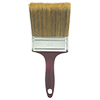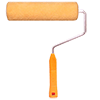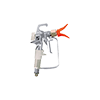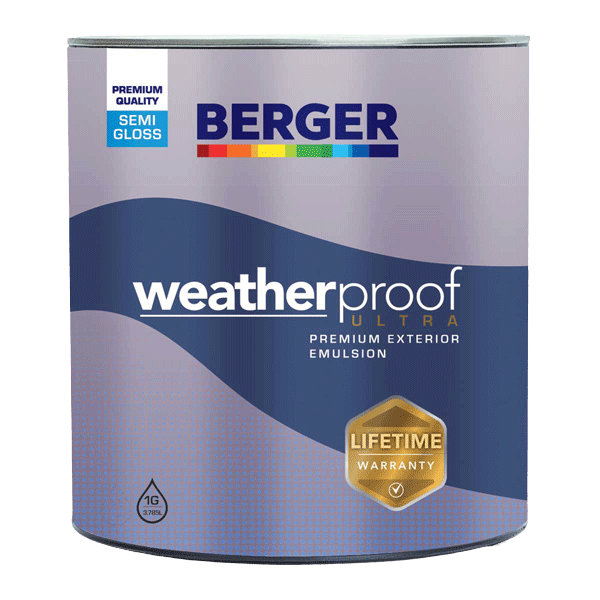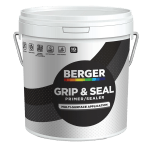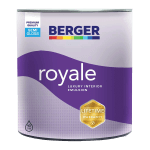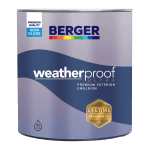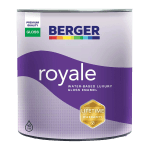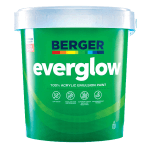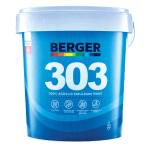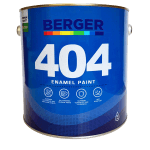Premium quality, pure acrylic exterior paint specially designed to resist the elements in the harsh Caribbean environment, to provide excellent weather resistance, easy of application, fast drying time, resulting in a durable finish. Available in hundreds of lightfast colours in the Berger Spectra 1800, Weatherproof Ultra forms a breathable film that allows moisture to pass through, and prevents penetration of liquid water. It addition formulated with a slow-release biocide, Weatherproof Ultra is guaranteed to provide 7 years of resistance to cracking, peeling, flaking, fungus and algae.
Surface preparation:
- Surface must be clean, dry and free of contaminants
- Clean by washing with appropriate cleaner
- Rinse thoroughly and allow to dry
- Treat chalking with Berger Penetrating Liquid
- Treat mildew with Berger Sterilizing Solution
- Remove any loose or peeling paint
- Repair holes and cracks with Berger Crack filler
Application Procedure:
- Berger recommends 2 topcoats for better durability and appearance
- No primer required for previously painted surfaces in good condition
- Prime in Berger Grip&Seal when moving from a dark to a light colour
- Weatherproof may be used self-priming, under itself
- Weatherproof can be applied to properly prepared alkyd based surface
- Sand aged alkyd surfaces
- Apply Berger Grip&Seal to prepared alkyd surface & new wood before top-coating with Weatherproof
Tips: Allow new concrete or plaster to cure for at least 30 days to avoid blotching caused by the interaction of paint and alkali salt.









